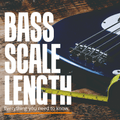The ultimate guide to buying your next capo
By Strings Direct – 29 August, 2023
 Next to plectrums, capos are probably one of the most common guitar accessories that we hear are either lost (or stolen) from gigs. We’re convinced that what your local pub loses in pint glasses, they are almost certainly gaining in their stockpile of picks and capos!!
Whether you’ve lost your capo, have never used one or have no idea what that crazy contraption does, we’re here to help you navigate the capo landscape. Buckle up!
Next to plectrums, capos are probably one of the most common guitar accessories that we hear are either lost (or stolen) from gigs. We’re convinced that what your local pub loses in pint glasses, they are almost certainly gaining in their stockpile of picks and capos!!
Whether you’ve lost your capo, have never used one or have no idea what that crazy contraption does, we’re here to help you navigate the capo landscape. Buckle up!
So what exactly is a capo and what does it do?
If you’ve been playing the guitar for a while, chances are you either already own a capo or have certainly used one before. But for those that haven’t, we’ll briefly explain the beauty behind these little wonders. A capo is a small accessory that when mounted to your guitar effectively mimics your guitar’s top nut, bringing it higher up the neck. So effectively the capo is shortening the neck of the guitar and raising the pitch of the open strings. For example, when placed at the third fret, a capo acts as your dummy nut meaning your open strings will now be (low to high) G, C, F, A#, D, G. It's worth noting that once you place a capo on your guitar, the frets that are now behind the capo will be muted and rendered unplayable. Much like normal playing, all fretting needs to be done in front of the nut and the same goes for a capo. This may seem obvious but poor old Boris Johnson couldn’t understand why his rendition of Oasis’s Wonderwall went down like a shit sandwich at the house of commons.
That’s great, but what benefit does a capo actually give?
Some purists may argue that if a capo is a cheats tool. We strongly disagree, especially when you see the benefits and creativity that such a such a simple little tool can bring to the table. Here’s just a selection of the main advantages; 1) When playing full barre chords, your first finger is anchored in position holding down the strings with your other fingers playing notes on higher frets. For barre chords, the capo can replace your first finger. So rather than playing an A barre chord at the fifth fret, if you place a capo on this fret, you only have to play the notes on the 3rd, 4th and 5th strings as the capo is doing the hard work for you by holding down the rest of the notes on the 5th fret. This frees up your other fingers to do some fancy chordal embellishments that will have otherwise been difficult to do with your first finger anchored down. 2) Placing a capo higher up the neck raises the pitch of the open strings allowing you to play in different keys. This is particularly helpful when playing a song where the band is altering the main key of the song. Rather than having to learn a plethora of different chord sequences, simply fit the capo to your guitar and play your chords as you normally would (only higher up the neck) 3) Capos are also a great help when you are playing with another guitarist. Often when there are two guitars in a band, an easy trap to fall into is to play the exact same thing as one another. Whilst this can add more 'oomph' to the sound, it can be overpowering and sound a little muddy at times. By adding a capo it can allow you to craft guitar parts that compliment one another, helping to add different textures and also help flesh out the sound more. You only have to look at our site to see that there’s a whole host of capos available nowadays. They’re all essentially designed to perform the same task… raise the pitch of the open strings on your instrument. But which one is the best? What ones should I avoid? The answers to these questions are all subjective and each design has its own little quirks so it’s worth being aware of these to help you decide which type of capo will be best for you and your needs. Let’s dive in;Which instrument will you be using the capo on?
Electric guitar? Acoustic guitar? 12-string? You'll see most people use a capo on a 6-string electric or acoustic guitar but there are dedicated capos out there made specifically for a whole host of instruments including 6-strings, 12-strings, classical guitars, banjos, mandolins, dobros, ukuleles and more. We’ve even seen bass players go rogue and adopt the use of a capo before. Whichever instrument you'll be using the capo on, be sure to find out if it will fit your instrument. Unless otherwise stated in the description, it's safe to assume that a capo is designed for 'normal' use on standard electric and acoustic guitars.Can I not just use any capo for my strung instruments?
Hhhm, perhaps! You see, different instruments often have different fingerboard widths. For example, 12-string guitars have wider necks, so a capo that’s designed for 6-string guitars may not necessarily cover all 12 strings, and if it does, it may not have enough pressure to hold down all the strings effectively. On a similar theme, different guitars have different radiused fingerboards which means they have a slight curvature to them from one edge to the other. In turn, the capo needs to have a curvature too, ensuring it holds down all the strings evenly. In comparison, nylon strung classical guitars have straight fingerboards (little to no radius) and will need a capo with a straighter edge to ensure the strings are all held down with even pressure. With this in mind, it’s always advisable to try and source a capo that is specifically designed with your instrument in mind. The G7th is considered by many to be at the high end of the market when it comes to capos. These capos are great as they come with a ‘Unique Tension Control’ feature. All you have to do is slide it under (or over) the neck and squeeze it until the strings are fretted. A super simple design that allows players to apply just the right amount of pressure. In fact, G7th have just released their Performance 3 capo (see image below). Building on its predecessor, the line of Performance 3 capos now includes revolutionary ‘Adjustable Radius Technology’ where the pad that frets the strings adjusts to your guitars radius making it great to suit all your (steel strung) guitars no matter what the radius measurement is.
How is the capo mounted to the guitar?
The thing to bear in mind here is how easy is it for the capo to be taken on and off the guitar's neck? Some capos require both hands to put them on whilst others simply allow you to grab them and pop them in position with one hand… easy peasy! This variation is apparent in two of the most favoured types of capo available today; the trigger design and lever design (Shubb Style). Two of the most popular brands of trigger capos are Jim Dunlop (see image below) and Kyser. These capos are quick and simple to take on and off and to also change their position. It’s as simple as squeezing the trigger handles together to release the pressure and move them up and down the neck. They’re also ideal for live use if you lack time in between songs. On the other hand (pun intended!) there are capos that require both hands for them to be mounted to the neck of the guitar. Such capos include the popular Shubb ‘Lever Style’ Capo (pictured below) which use a clamp mechanism to secure the capo in position. You simply place the capo under (or over.. most capos can be mounted either way) the neck and use the lever to secure the capo in position. These aren’t time-consuming to put on/take off and certainly have other advantages (more of that later on), but for some, the ease of the squeeze that trigger-style capos offer may be more of a draw for some people.
On the other hand (pun intended!) there are capos that require both hands for them to be mounted to the neck of the guitar. Such capos include the popular Shubb ‘Lever Style’ Capo (pictured below) which use a clamp mechanism to secure the capo in position. You simply place the capo under (or over.. most capos can be mounted either way) the neck and use the lever to secure the capo in position. These aren’t time-consuming to put on/take off and certainly have other advantages (more of that later on), but for some, the ease of the squeeze that trigger-style capos offer may be more of a draw for some people.

Size and Weight
In the grand scheme of things, most capos are fairly small and won’t require their own roadie to be brought into a venue! However, different designs mean there are variations in the size and weights of capos. Taking the two examples above, most trigger style capos tend to be larger than the lever style capos. Some players see capos as a bit of an eye-sore, so opting for something on the smaller side will mean it remains as inconspicuous as possible. We’ve seen a growing trend for some companies to add extra features to capos for more versatility. Such features include adding pickholders and clip-on tuners to capos. Whilst these are handy, it’s worth bearing in mind that such extras tend to add bulkiness and weight. As we’ve mentioned before, even the biggest of capos won’t require Arnie-like biceps to lift them but some players don’t like the added weight to their guitar's neck. If you fall into this camp, it’s probably worth opting for a capo that is smaller and simple in design. Alternatively, you may wish to source a dedicated ‘lightweight’ capo. Shubb has its own 'Lite' range of capos which weigh less than half of the original design and G7th also have an Ultralight range too. Quoted as being the ‘Lightest Capo on the Market’ it comes in weighing less than a 3rd of a bag of crisps! We swear these things will be floating soon!! You can check out our separate review of these capos here.Colour and finish
You’d be forgiven for thinking that black and silver are the only colour of capos available today! Oh no! As with most things, the world is your oyster when it comes to the colour of your capo too. Kyser offers the biggest range of colours for their trigger capo range with hugely bright finishes such as orange and even several shades of purple… Prince would have been a happy chappy!!Pressure! Pushing down on me, pushing down on you…
Pressing down the strings at the right pressure is an important skill we all learn as guitarists when we first start playing. Do you remember squeezing the hell out of the strings when you first started? Only to find that doing so would send the notes slightly sharp. Likewise, if you didn’t apply enough pressure, the strings would be muted and not ring out at all. Ensuring that your capo is applying just the right amount of pressure is important too and there are plenty of capos on the market that allow you to alter the amount of tension they apply to the guitar's neck. The way in which tension is adjusted can vary from capo to capo, however, most will have a screw mechanism which when tightened adds tension and vice-versa. In our opinion, a feature like this is very handy in helping to stay in tune. The one type of capo that doesn’t always score highly in this area is the trigger capo. As we’ve mentioned earlier, their simple design makes moving the about a cinch. However, the vast majority come with a spring that is non-adjustable. As a result, the tension in each capo can vary slightly, depending on what was put on at the factory. From a playability perspective, this means that one capo may squeeze the strings harder than another, and because they aren’t adjustable, you may find yourself having tuning issues (not always, but just something to be aware of). Saying that, D’Addario produces the Artist Capo: a trigger style design where the tension of the spring in the capo can be finely adjusted. This is somewhat of a revelation bringing together the convenience of the trigger capo design along with the benefit of ensuring your capo's tension is perfectly set for your guitar - win, win!!Distribution of pressure across all strings
Earlier in the blog, we mentioned the importance of being able to adjust the overall tension in the capo, but another important factor to consider is the distribution of that tension across all the strings. Trigger capos can be guilty of not performing in this area, often applying more pressure towards the spring and less towards the end of the capo. The old fashioned strap style capos are also prone to this downfall too. One design that really scores high in this area is the traditional 'cradle style' capos. Some may recall using this style ‘back in the day’ and they may be looked upon as somewhat of an ‘old fashioned’ design, however, there are several manufacturers that continue to produce this style of capo because of the benefits they provide. In fact, D’Addario has recently released their version named the Cradle Capo which has been designed in conjunction with Ned Steinberger (founder of Steinberger guitars and basses!) The beauty behind this design is the self-centring cradle which when tightened fits right behind the middle of the neck and the capo's bar applies even pressure to the strings (which can be finely tuned depending on the thickness of your neck using the screw mechanism at the back). They can prove a little more fiddly to put on the guitar, but this is a very small price to pay for the peace of mind of all strings being in tune.
"Right! Whose nicked my bloody ca… oh there it is!!"
It’s fair to say that you won’t be using your capo all the time, perhaps a few songs here and there. So where do you put it when it’s not in use. On a dark stage floor of course, where it can be easily lost (or worse, stolen!) With this in mind, often we see players temporarily pop their capo for safekeeping on the top of their guitar’s headstock. Whilst it may be an ugly sight for some, others may find this a useful feature to have, particularly if you’ve lost your fair share of capos in the past. In our experience, there are only a handful of capos that allow for this. Trigger capos are an excellent choice as they are always looking to clamp onto something. The G7th performance capo range is another viable option too and sometimes the cradle-style capos can roll over the nut and remain there until they're needed again.
“Something a little more specialist, Sir?”
So far we’ve discussed capos that cover the entire width of the fretboard. But there’s a younger sibling in the capo world… the Partial Capo. These only fret a certain portion of the strings… opening up a whole new world of tunings and playing styles. In fact, some players have been known to add not 1, but 2 partial capos for even weirder and more wonderful tones to discover. There are different sizes of partial capo too. We’ve seen versions that cover 1, 2, 3, 4 and 5 strings, helping to cater for any player's capo needs and to also help them push the boundary of their guitar playing. The Kyser Drop D capo covers 5-strings and skips the outer string (depending on if you mount it from above the neck or below). The Kyser Short Cut Capo is another variation covering 3 adjacent strings. Again this can be mounted on the top of the neck or from below and depending on which way it’s mounted it will cover 3 different sets of strings. The guys at Shubb also have a few partial capo offerings too if you would prefer to have the option of adjusting your capo's tension. Oh, and let's not forget the Spider Capo. For those of you who want to lock yourselves away in a room for 3 years and study for your PhD in capo'ing, check this one out. A funky design that allows you to capo any strings on any fret in any variation….fortune favours the brave on this one!Conclusion
We believe hat capos are wonderful little tools that should be celebrated. They can freshen up your playing and be a huge catalyst for breathing new life into your guitar playing. We hope that outlining all of these variations hasn’t confused you, rather helped you understand the different designs on the market a little more. We’re always happy to help you make your choice so if you wish to get in touch and need any further advice, please don’t hesitate to get in touch or leave us a message in the comment section below. No question is too silly and we love to hear from you all. Thanks again for reading. We’ll see you in the next post.




